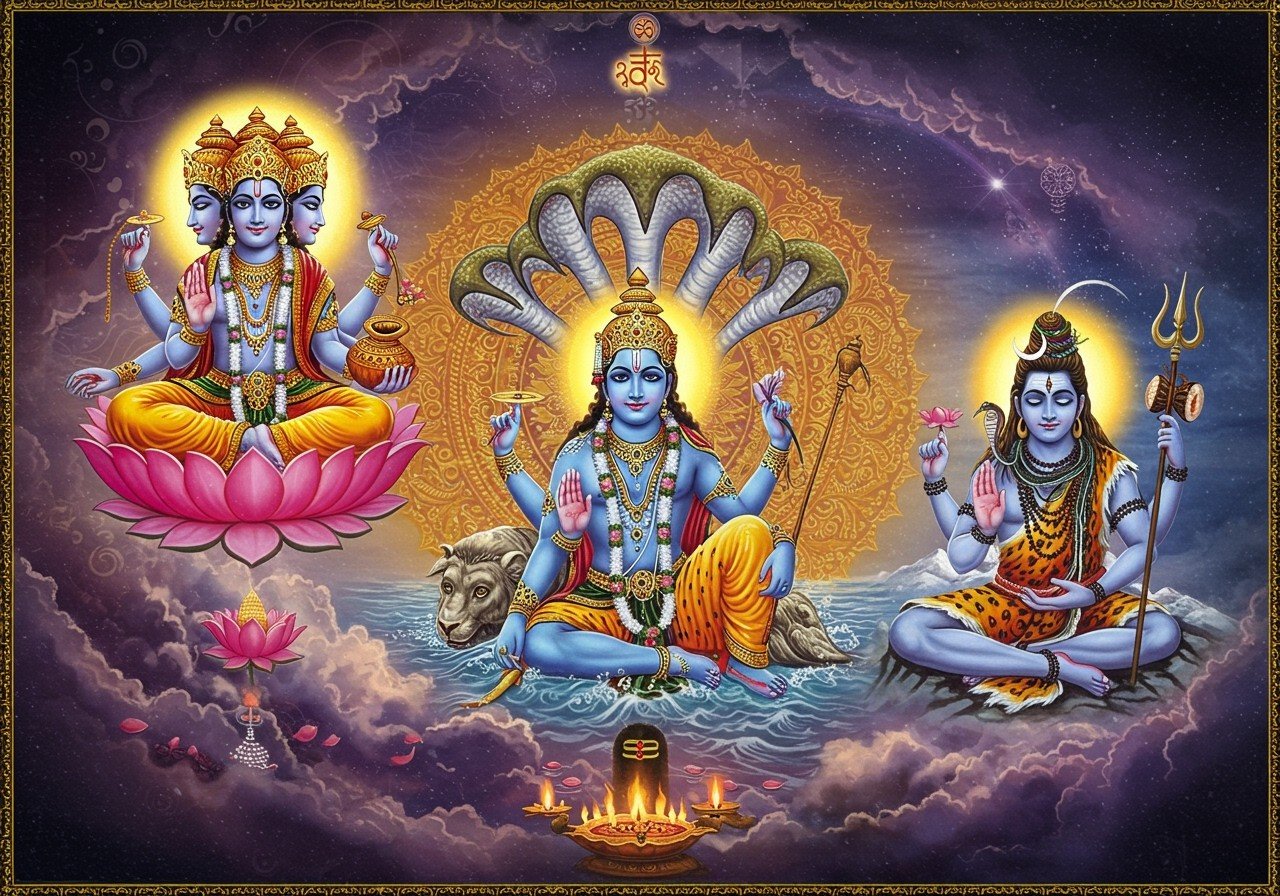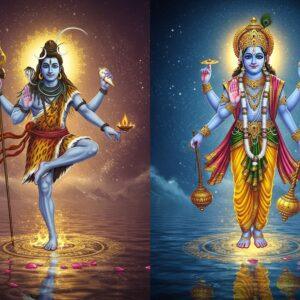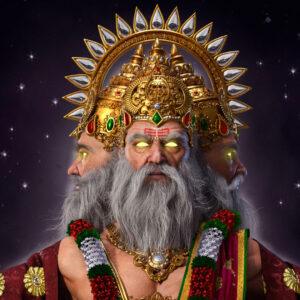
The Trimurti is a core concept in Hinduism, representing the cosmic functions of creation, preservation, and destruction. This divine triad consists of Brahma the Creator, Vishnu the Preserver, and Shiva the Destroyer. Understanding the Trimurti provides valuable insights into Hindu theology and the cyclical nature of existence. Many misconceptions surround these deities and their roles. Let’s delve into the significance of the Trimurti and clarify some common misunderstandings.
Understanding the Roles of Brahma, Vishnu, and Shiva
Each deity within the Trimurti plays a crucial and distinct role:
- Brahma: Brahma is responsible for bringing the universe into being. He is revered as the “Father of All”. Interestingly, Brahma is not as widely worshipped as Vishnu and Shiva, as his primary act of creation is considered complete. His consort is Saraswati, the goddess of knowledge, music, and poetry, symbolizing the creative power of wisdom and art. You can explore more about Hindu beliefs and practices here.
- Vishnu: Vishnu maintains the balance and harmony of the universe. He is known for his various incarnations (avatars) who descend to Earth to restore dharma and vanquish evil. Lord Rama and Lord Krishna are among his most celebrated avatars. Vishnu’s consort is Lakshmi, the goddess of wealth and prosperity, representing the abundance and well-being that preservation brings. Learn more about Hindu Gods and Goddesses on this page.
- Shiva: Shiva is responsible for the destruction aspect of the cosmic cycle. However, this destruction is not malicious; it represents the necessary dissolution to pave the way for renewal and rebirth. Shiva’s consort is Parvati, the goddess of power, love, and devotion, embodying the transformative power of destruction. Discover the significance of Hindu rituals here.
The Trimurti and the Concept of Balance
The Trimurti emphasizes the interconnectedness and balance between these three fundamental forces. While distinct in their roles, they are not competing forces but rather complementary aspects of a unified whole. The Om symbol encapsulates this concept, with the sounds A, U, and M representing creation, preservation, and destruction, respectively, and ultimately pointing towards Brahman, the ultimate reality. Delve deeper into Hindu philosophy with this guide.
Addressing Common Misconceptions
Some common misconceptions exist about the Trimurti:
- Is the Trimurti a single god? The Trimurti is not a single entity but a triad of distinct deities, each with a specific role. While sometimes depicted in a single form with three faces, this represents the interconnectedness of their functions, not a singular identity. Learn more about the meanings and importance of Hindu symbols here.
- Is one god more powerful than the others? The Trimurti embodies balance and equality. No single deity is considered superior; their power lies in their interdependence and the harmonious execution of their respective cosmic functions. Explore Hanuman’s journey of devotion and strength in this epic tale.
Poojn.in: Your Resource for Hindu Cultural Goods
Poojn.in, India’s leading online store for cultural and religious products, offers a wide selection of items to support your spiritual practice and understanding of the Trimurti. Explore our collection of deity idols, puja sets, sacred texts, and more to deepen your connection with these divine forces. We offer high-quality Lord Shiva murtis, Radha Krishna murtis, and other essential puja items like camphor. Visit Poojn.in today to discover our extensive range.


